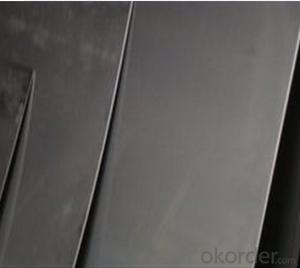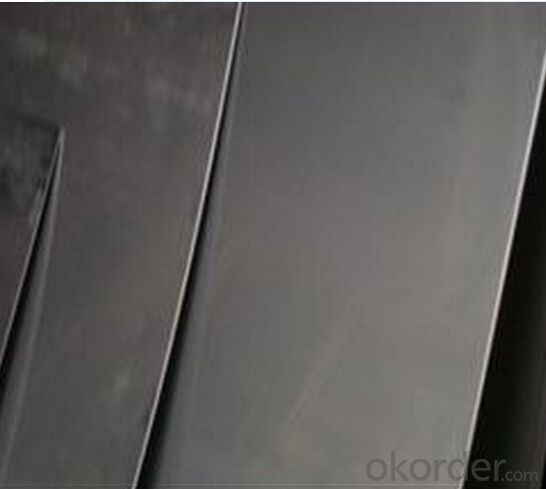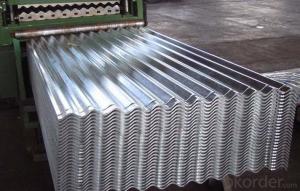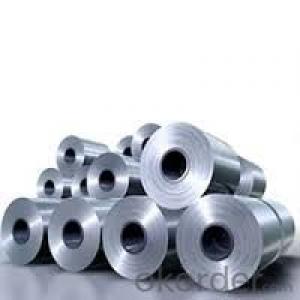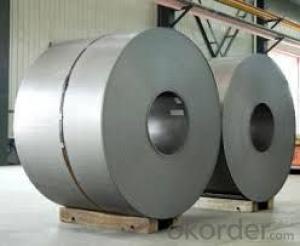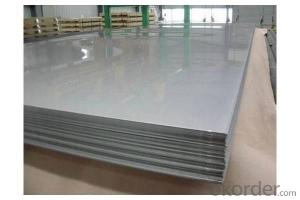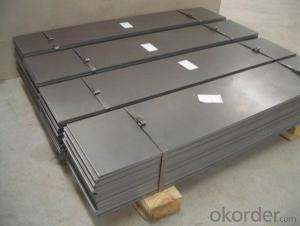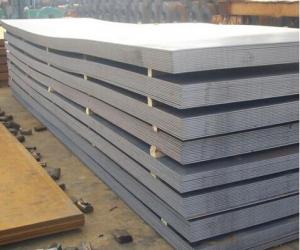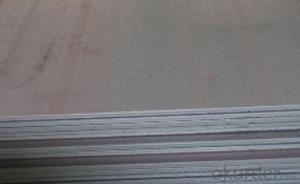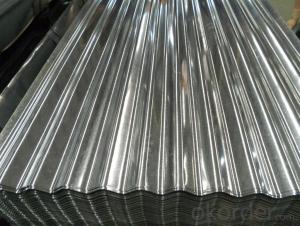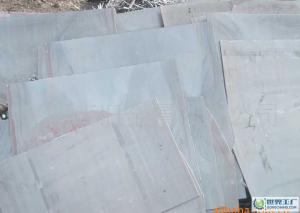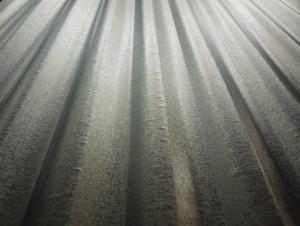Hot Rolled Carbon Steel Sheet Panel ASTM A36 ASTM A570
- Loading Port:
- Tianjin
- Payment Terms:
- TT OR LC
- Min Order Qty:
- 50 m.t.
- Supply Capability:
- 50000 m.t./month
OKorder Service Pledge
OKorder Financial Service
You Might Also Like
Specification
1.Description of steel sheet:
Stainless steel types 304 and 304L.Type 304 stainless steel material is a kind of common stainless steel materials, corrosion prevention is b
2.Features of steel sheet:
304 stainless steel has good corrosion and corrosion resistance and good resistance to intergranular corrosion. For oxidizing acid, obtained in the experiment, the concentration of 65% or less under the boiling temperature of nitric acid, 304stainless steel has a strong corrosion resistance. To most organic and inorganic acid and alkali solution with good corrosion resistance ability.
All stainless stock can be delivered mirror polished if required
3.Data of steel sheet:
(In Quenching and Tempering)
Tensile strength | Yield strength | Elongation | Reduction in Area | Impact | Hardness |
(σb/MPa) | (σs/MPa) | (δ5/%) | (ψ/%) | (J) | (HRC) |
≥185 | 370-500 | ≥21 |
4.Image of steel sheet:
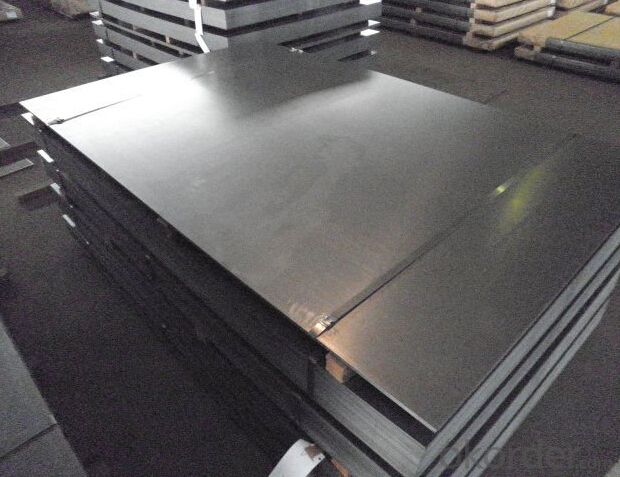
5.FAQ
We have organized several common questions for our clients,may help you sincerely:
①How about your Warranty?
Warranty: 1-Year for the whole light. Warranty is based on correct storage, installation, using and maintenanc
②How to guarantee the quality of the products?
We have established the international advanced quality management system,every link from raw material to final product we have strict quality test;We resolutely put an end to unqualified products flowing into the market. At the same time, we will provide necessary follow-up service assurance.
③How long can we receive the product after purchase?
In the purchase of product within three working days, We will arrange the factory delivery as soon as possible. The pecific time of receiving is related to the state and position of customers.Commonly 7 to 10 working days can be served.
- Q: How are steel sheets inspected for defects?
- Steel sheets are typically inspected for defects using various techniques such as visual inspection, non-destructive testing methods like ultrasonic testing, magnetic particle inspection, and eddy current testing. These methods help identify any surface or internal defects such as cracks, voids, or abnormalities that may affect the quality and performance of the steel sheets.
- Q: Can steel sheets be used for signage or advertising displays?
- Yes, steel sheets can be used for signage or advertising displays. They provide a durable and long-lasting option, and can be customized with various finishes and designs to suit individual preferences and branding requirements. Additionally, steel sheets offer a sleek and professional look, making them suitable for both indoor and outdoor applications.
- Q: What is the average cost of steel sheets per square foot?
- The average cost of steel sheets per square foot can vary widely depending on various factors such as the type of steel, thickness, size, and market conditions. However, as of 2021, the average cost of steel sheets ranges between $5 to $20 per square foot. It is important to note that this is a general estimate and prices may fluctuate based on location, supplier, and other market factors. Therefore, it is recommended to obtain quotes from multiple suppliers to get an accurate and up-to-date cost for steel sheets per square foot.
- Q: Are steel sheets suitable for railway infrastructure?
- Railway infrastructure can benefit greatly from the use of steel sheets. Steel is a popular choice for constructing railway infrastructure because it is strong, durable, and versatile. One of the main advantages of steel sheets in railway infrastructure is their high strength-to-weight ratio. Steel is exceptionally strong, allowing it to handle heavy loads and provide long-lasting support to railway tracks, bridges, and other structures. This strength is crucial for the safety and stability of the railway system, especially when dealing with the weight and impact forces exerted by trains. Furthermore, steel sheets offer excellent durability and resistance to wear and tear. Railway infrastructure is constantly exposed to stress, including vibrations, impacts, and extreme weather conditions. Steel's inherent properties make it highly resilient to these factors, reducing the need for frequent repairs and maintenance. This durability leads to significant cost savings in the long run, as steel structures have a longer lifespan compared to other materials. In addition, steel sheets are highly versatile and can be easily shaped and sized to meet specific railway infrastructure requirements. This flexibility allows for the efficient construction of rails, sleepers, bridges, and other components necessary for a functional and safe railway system. Steel's adaptability also enables easy modifications and expansions to the infrastructure as needed, ensuring compatibility with changing transportation needs. To summarize, steel sheets are an excellent choice for railway infrastructure due to their strength, durability, and versatility. Their high strength-to-weight ratio, resistance to wear and tear, and ease of fabrication make them ideal for constructing and maintaining railway tracks, bridges, and other structures. The use of steel in railway infrastructure guarantees the safety, efficiency, and longevity of the railway system.
- Q: Are the steel sheets suitable for electrical applications?
- Indeed, steel sheets prove themselves to be fitting for electrical purposes. Being an excellent conductor of electricity, steel emerges as an optimal substance for a myriad of electrical components and applications. It finds utility in electrical enclosures, panels, cabinets, and other structures that accommodate electrical equipment. Moreover, steel sheets are frequently employed in grounding systems, electrical connectors, and electrical appliances. Furthermore, steel sheets offer sturdiness and safeguarding against environmental elements, including corrosion or fire, which hold paramount importance in electrical applications.
- Q: How do steel sheets perform in impact resistance?
- Steel sheets are known for their exceptional impact resistance. Due to their high strength and durability, steel sheets can withstand significant force and absorb energy, making them highly effective in resisting impacts.
- Q: Are steel sheets available in different grades of stainless steel?
- Yes, steel sheets are available in different grades of stainless steel. Stainless steel is a versatile material that is used in various industries, such as construction, automotive, and manufacturing. It is known for its corrosion resistance and durability. There are several grades of stainless steel, each with its own unique properties and composition. The most common grades include 304, 316, 430, and 201. These grades differ in their chemical composition, such as the amount of chromium, nickel, and other alloying elements present. The choice of grade depends on the specific application and the desired characteristics of the steel sheet. For example, grade 304 is commonly used for general purposes due to its excellent corrosion resistance and strength. Grade 316 is often preferred in environments with high exposure to corrosive elements, such as marine applications. Steel sheets are available in various thicknesses, sizes, and finishes, making them suitable for different applications. Whether you need stainless steel sheets for architectural purposes, food processing equipment, or industrial machinery, there is a grade of stainless steel that can meet your requirements. It is important to consult with a supplier or manufacturer to determine the appropriate grade of stainless steel sheet for your specific needs. They can provide guidance on the best grade based on factors such as the intended use, environmental conditions, and budget constraints. Overall, the availability of different grades of stainless steel sheets ensures that there is a suitable option for diverse applications.
- Q: How are steel sheets coated for corrosion resistance?
- Steel sheets are commonly coated for corrosion resistance using a process called galvanization. Galvanization involves applying a layer of zinc to the surface of the steel sheet. This can be done through either hot-dip galvanization or electro-galvanization. In hot-dip galvanization, the steel sheet is immersed in a bath of molten zinc, which adheres to the surface of the steel through a metallurgical reaction. The zinc coating forms a protective barrier that prevents moisture and oxygen from reaching the steel, thus inhibiting corrosion. Electro-galvanization, on the other hand, involves passing an electric current through the steel sheet while it is immersed in a zinc electrolyte solution. The electric current causes the zinc ions in the solution to be attracted to the steel surface, forming a thin layer of zinc coating. This method is typically used for thinner steel sheets or when a more precise and controlled coating thickness is required. Both hot-dip galvanization and electro-galvanization provide effective corrosion resistance to steel sheets. The zinc coating acts as a sacrificial layer, meaning that it corrodes first before the steel underneath. This sacrificial protection extends the lifespan of the steel sheet and prevents rust from forming. Additionally, the zinc coating can also provide a decorative finish, making it suitable for both practical and aesthetic purposes. Overall, the process of galvanization is a widely used and effective method for coating steel sheets to enhance their corrosion resistance and durability.
- Q: Can the steel sheets be used for automotive body panels?
- Yes, steel sheets can be used for automotive body panels. Steel is a commonly used material in the automotive industry due to its strength, durability, and ability to withstand impacts. Steel sheets are often used for body panels as they provide structural integrity to the vehicle and can effectively protect the occupants in the event of a collision. Additionally, steel can be easily formed and molded into complex shapes, making it suitable for creating various body panel designs. Overall, steel sheets are a reliable and commonly chosen material for automotive body panels.
- Q: What is a die steel plate?
- The profiled sheet steel plate has the advantages of easy processing, light weight, fast installation, simple operation, and the tedious process of removing and dismantling the formwork.
Send your message to us
Hot Rolled Carbon Steel Sheet Panel ASTM A36 ASTM A570
- Loading Port:
- Tianjin
- Payment Terms:
- TT OR LC
- Min Order Qty:
- 50 m.t.
- Supply Capability:
- 50000 m.t./month
OKorder Service Pledge
OKorder Financial Service
Similar products
Hot products
Hot Searches
Related keywords
